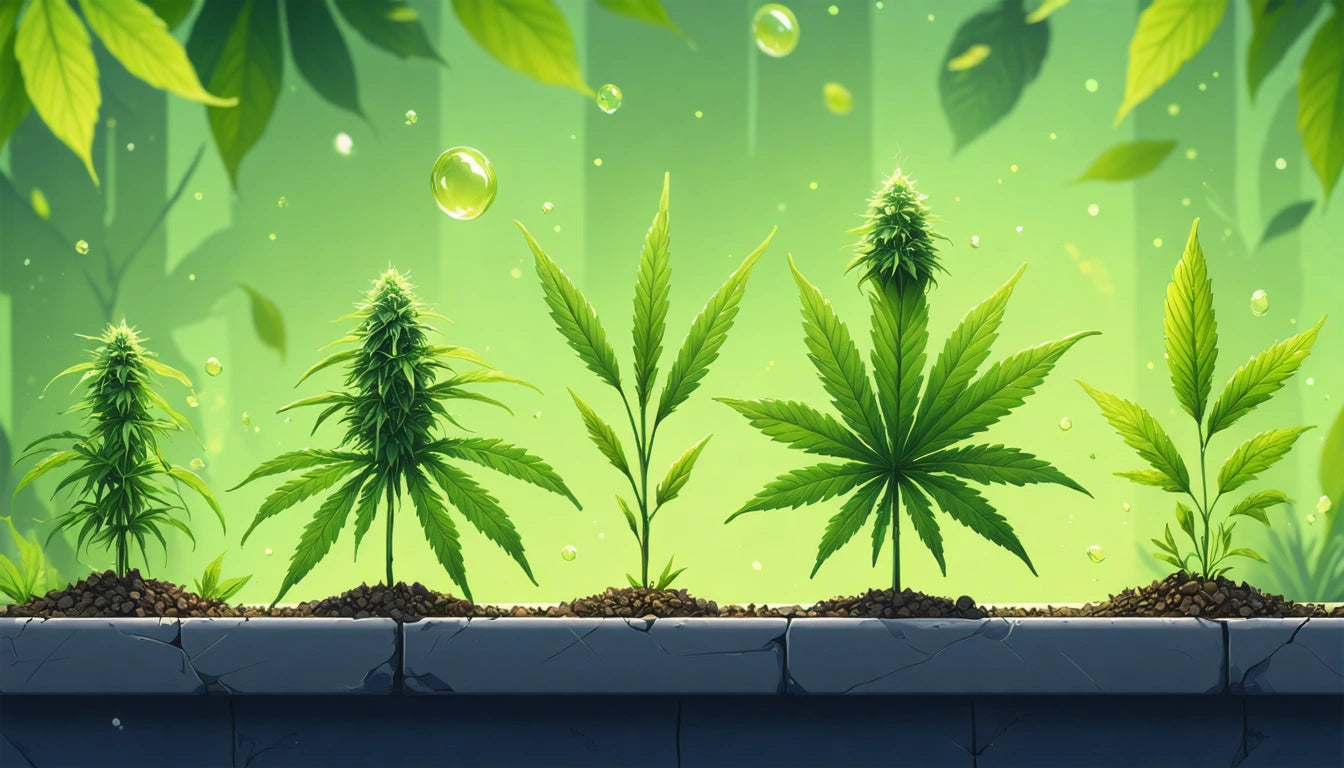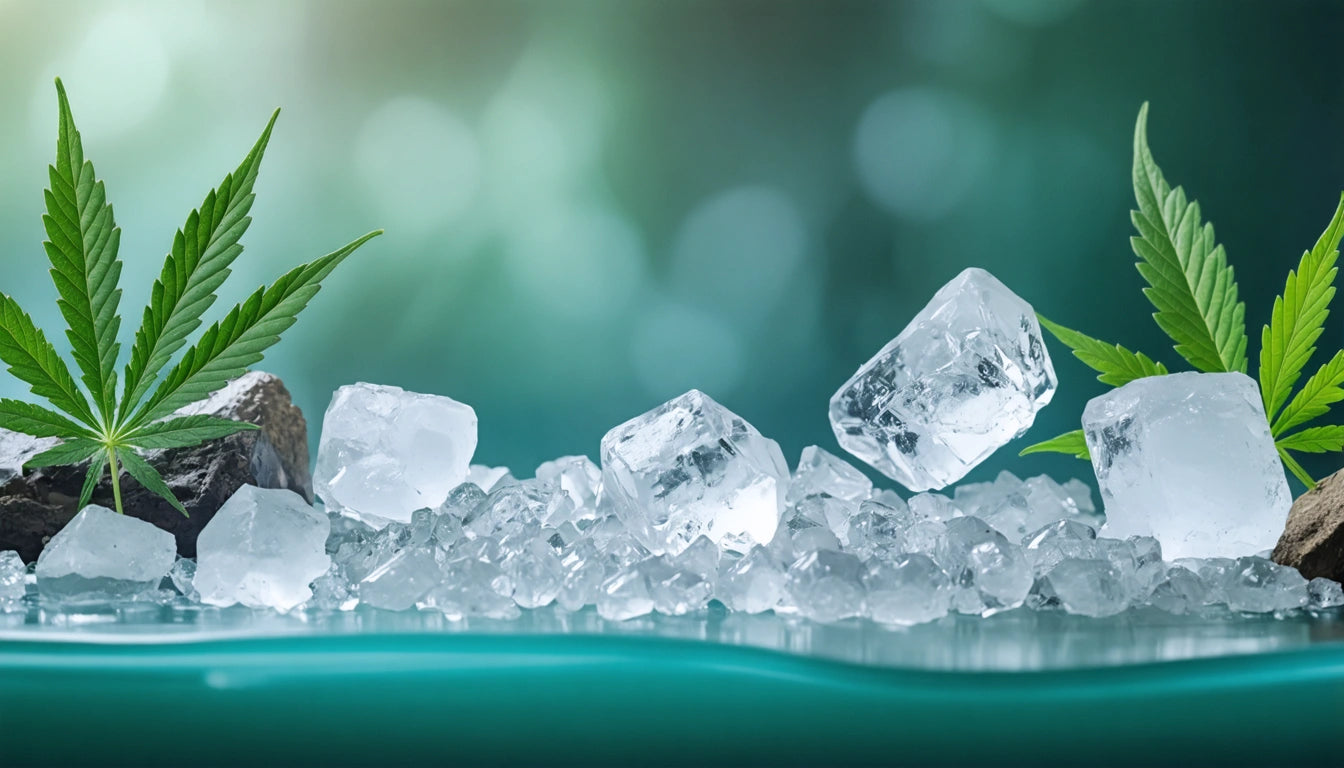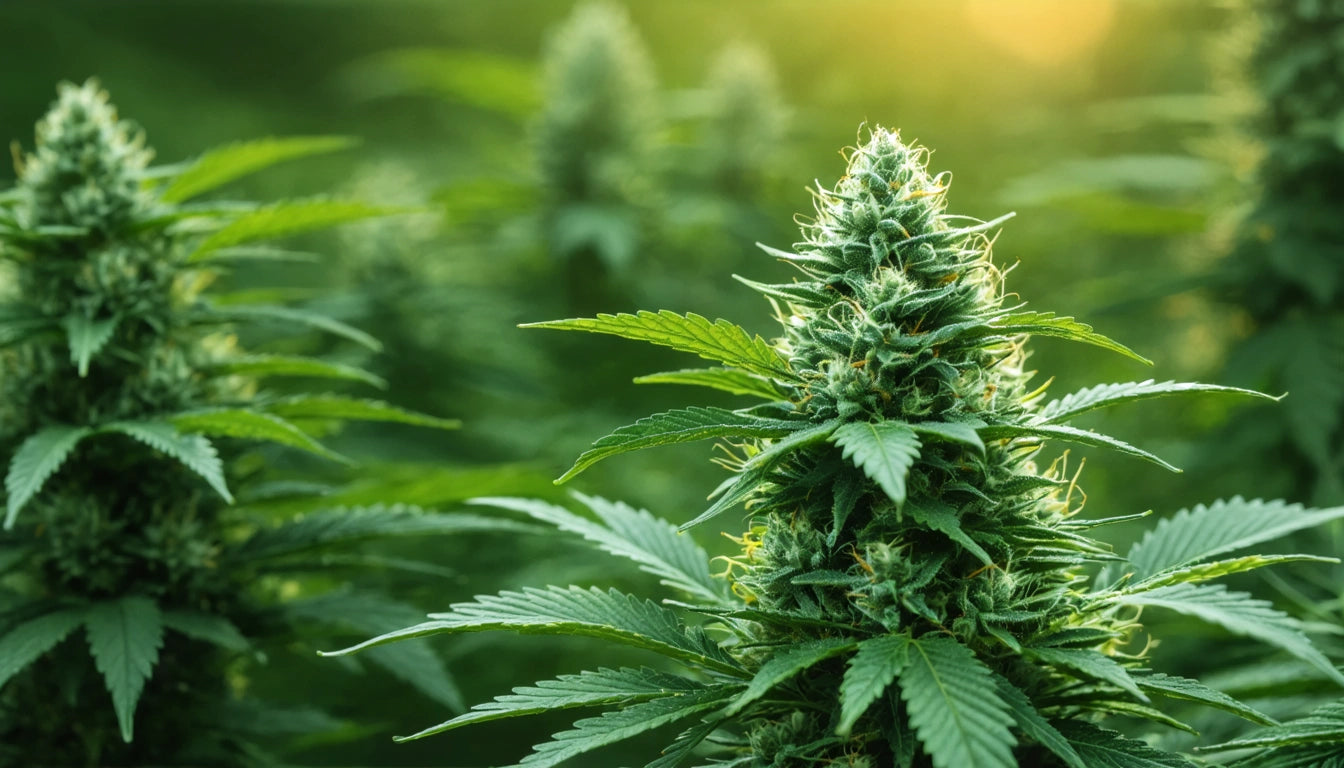Table of Contents
How to Identify Male and Female Cannabis Plants
Understanding how to tell male from female cannabis plants is a fundamental skill for any cannabis cultivator. Gender identification directly impacts cultivation success, especially for those growing for flower production. This guide provides clear visual indicators and timelines to help you confidently determine your plants' sex before it affects your grow.
Importance of Gender Identification in Cannabis
Knowing how to distinguish between male and female marijuana plants is crucial because only female plants produce the high-THC buds desired for consumption. Male plants produce pollen sacs instead of buds, and when they pollinate females, it reduces the potency and quality of the harvest. For most growers, identifying and removing male plants early is essential to prevent unwanted pollination.
According to our complete guide on plant identification, a single undetected male can pollinate an entire grow room, potentially reducing yields by up to 50% and decreasing cannabinoid content in the remaining harvest.
Timeline for Identifying Plant Sex
Cannabis plants typically reveal their sex during the pre-flowering stage, which occurs approximately 4-6 weeks after germination for photoperiod plants, or 3-4 weeks for autoflowering varieties. This timeline can vary based on:
- Strain genetics (some show sex earlier than others)
- Growing conditions and light cycles
- Plant health and stress factors
- Cultivation techniques employed
While waiting for plants to reveal their sex naturally, maintaining optimal growing conditions is essential. Using humidity control products for cannabis storage can help create the ideal environment for healthy development, especially in vegetative stages when proper moisture levels are critical.
Visual Indicators: How to Tell Male and Female Cannabis Plants Apart
Pre-Flowering Stage Identification
The most reliable way to tell if cannabis is male or female is by examining the pre-flowers that develop at the nodes where branches meet the main stem. Here's how to tell male cannabis from female:
- Female pre-flowers: Look for small, teardrop-shaped structures with a pair of white hair-like pistils emerging from the top. These pistils are the definitive sign of a female plant.
- Male pre-flowers: Appear as small, round balls or sacs without pistils. These pollen sacs will eventually open to release pollen if allowed to mature.
As detailed in this visual identification guide, using a magnifying glass or jeweler's loupe can make these subtle differences more apparent during early identification.
Mature Plant Indicators
Beyond pre-flowers, mature plants display additional characteristics that help confirm their sex:
- Female plants: Develop clusters of pistils that form the foundation of buds. Growth tends to be bushier with closer internodal spacing.
- Male plants: Grow taller with fewer leaves and greater internodal distance. Their pollen sacs grow in clusters that resemble small bunches of grapes.
Common Mistakes When Sexing Cannabis Plants
Even experienced growers can make errors when learning how to tell female from male cannabis plants. Common mistakes include:
- Confusing stipules (leaf-like growths at nodes) for pistils
- Misidentifying new growth tips as pre-flowers
- Attempting identification too early before pre-flowers have formed
- Relying solely on secondary sex characteristics like height or growth pattern
This comprehensive guide provides additional visual references to help avoid these common identification errors.
Identifying Hermaphrodite Plants
Hermaphrodite plants possess both male and female reproductive organs and present a unique challenge. These plants can self-pollinate and compromise an entire crop. Hermaphroditism is typically caused by:
- Environmental stress (light leaks, temperature fluctuations, nutrient problems)
- Physical damage to the plant
- Genetic predisposition in certain strains
Hermaphrodites can be identified by the presence of both pistils and pollen sacs on the same plant. Some display distinct male and female flowers, while others produce "bananas" or "nanners" (anthers that emerge directly from female flowers).
Advanced Techniques for Early Sex Determination
For growers who need to know how to tell if male or female cannabis before the pre-flowering stage, several advanced techniques exist:
- Cloning and forced flowering: Take a small cutting from each plant, root it, and place it under a 12/12 light cycle to force flowering and reveal sex while keeping the original plant in vegetative growth.
- Feminized seeds: Using feminized seeds virtually eliminates males, though doesn't protect against stress-induced hermaphrodites.
- Genetic testing: Professional labs can determine plant sex from a small leaf sample, though this is more expensive than visual identification.
As explained in our seed identification guide, while certain physical characteristics of seeds may hint at gender, these methods are far less reliable than examining the growing plants themselves.
Practical Applications of Plant Sex Knowledge
Understanding how to identify male and female cannabis plants has several practical applications beyond simply removing males:
- Breeding programs require both male and female plants
- Male plants can be valuable for hemp fiber production
- Selective pollination for seed production
- Creating feminized seeds through controlled hermaphroditism
For those interested in utilizing rather than discarding male plants, this resource on male plant management provides valuable insights into their potential applications.
By mastering the skill of cannabis sex identification, growers can make informed decisions that significantly impact their cultivation success, whether growing for personal use or commercial production.











Leave a comment
All comments are moderated before being published.
This site is protected by hCaptcha and the hCaptcha Privacy Policy and Terms of Service apply.